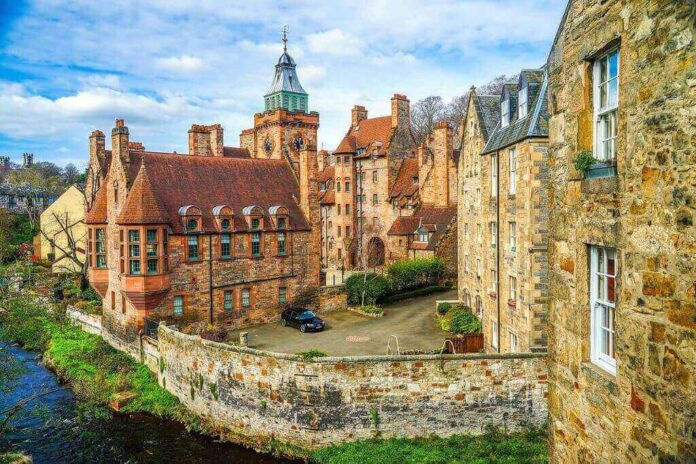It feels like traveling back in time when you stroll into Dean Village’s picturesque neighborhood. Dean Village is bursting with irresistible attractions and ideal for people seeking a lovely, tranquil afternoon, even though it may not be as lively as other Edinburgh neighborhoods. The list of hand-selected Dean Village tourist attractions and activities is provided below.
1. Dean Village: A Peaceful Place Inside The City
Following the Water of Leith through Edinburgh will eventually lead you to Dean Village, a historic neighborhood that is one of the most fascinating parts of the entire city center.
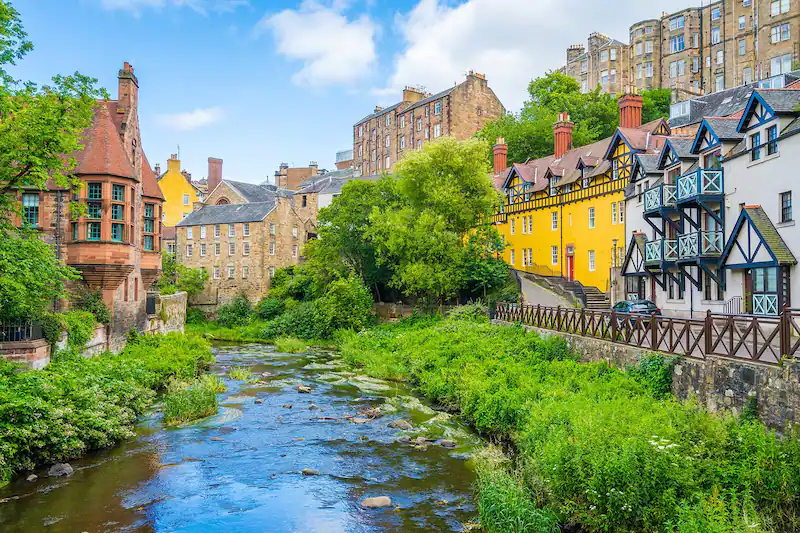
Dean Village, once the location of a significant grain milling industry that lasted for more than 800 years, is today arguably best recognized for the stunning structures that appear in numerous iconic photographs of Edinburgh.
A walk through this section of the city is like traveling back in time, even though the milling industry has long ago vanished into history. This is because of the numerous millstones and carved stone plaques that are scattered around the area.
2. Best things to do in Dean Village
The Scottish National Gallery of Modern Art features the greatest in contemporary art
The Scottish National Gallery of Modern Art, housed in two fine neoclassical structures, is situated along the River of Leith’s banks. These bright, roomy structures, originally constructed as orphanages in the early 1800s, underwent renovation in the late 1900s and are now home to masterpieces from the modern and contemporary periods.
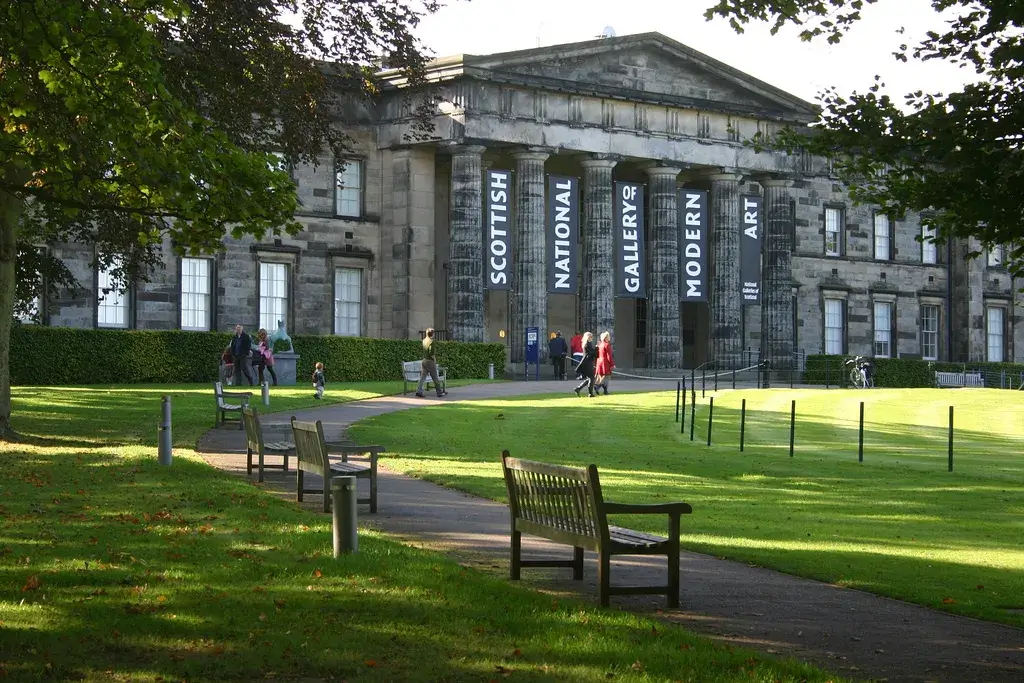
The museum, which won the Gulbenkian Award for Museum of the Year in 2004, has one of the largest collections of Dada and Surrealist artwork worldwide. It also houses pieces by Turner Prize winner Rachel Whiteread and well-known Edinburgh native Sir Eduardo Paolozzi. How could you not go to the Scottish National Museum of Modern Art when combined with a lawn that has been planted to represent chaos theory?
Drink some of the restorative St. Bernard’s Well water
Locals found a natural spring close to the Water of Leith in 1760. The mysterious medicinal powers of the water, which could treat anything from arthritis to blindness, quickly gained notoriety. Although not everyone praised the spring’s virtues, some said it tasted like “the washings from a foul gun barrel” and had “the odious twang of hydrogen gas.”
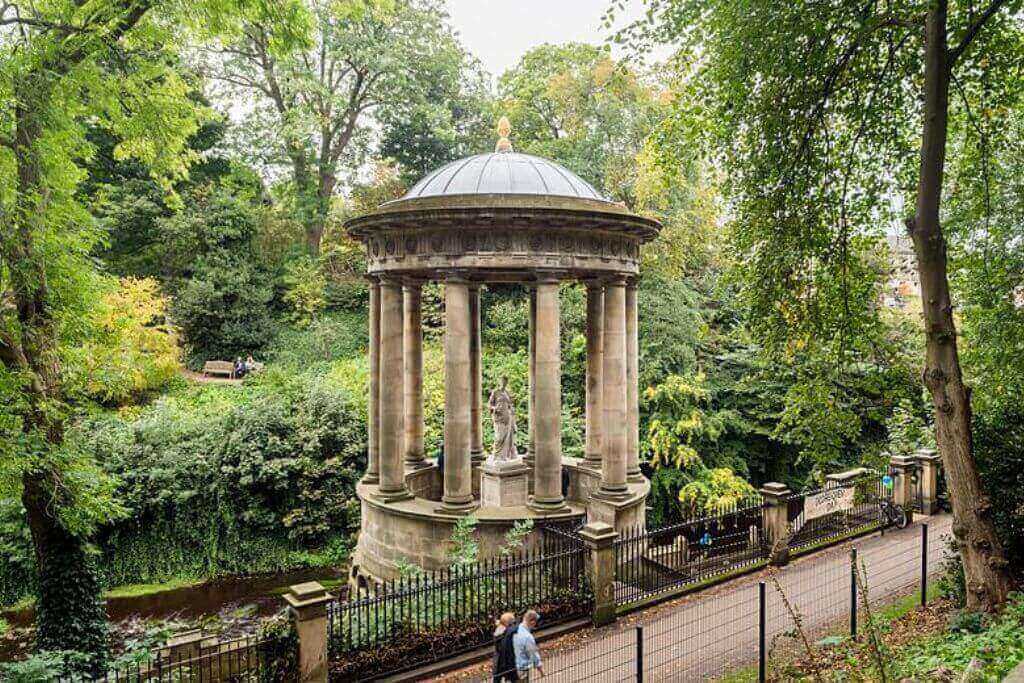
The spring was named St. Bernard’s Well after the estate on which it was discovered. The wealthy soon began traveling to the spring in search of a miraculous cure for their ailments. On the site of the spring, however, a neoclassical pump room in the shape of a Roman temple from Tivoli was built.
In the middle, a statue of the goddess of health, Hygeia, stands as a symbol of the purported healing powers of the spring. The pump room has been closed to the general public since 1940. However, it does open on occasion throughout the year, especially on Edinburgh’s yearly Open Doors Day.
Well Court offers a glimpse into the Victorian era
The magnificent Well Court, constructed in the 1880s out of beautiful red sandstone, sits right in the middle of Dean Village. Well Court, which embodies the aesthetic of the arts and crafts movement, was built at Sir John Findlay’s request in order to provide working-class families in Dean Village who worked at the mills with appropriate housing.
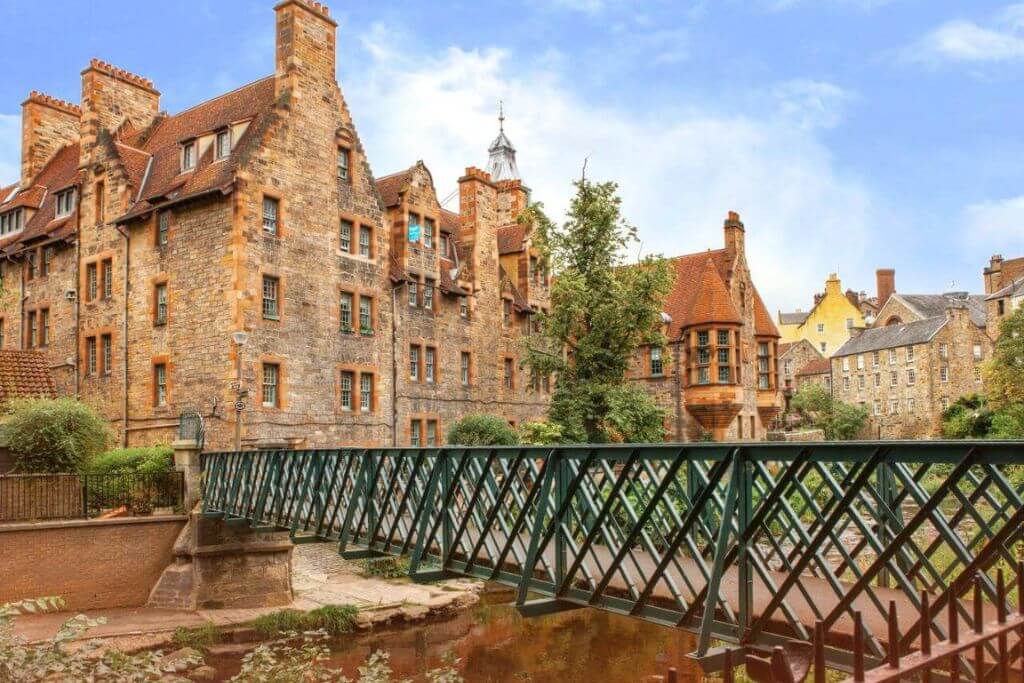
Even while Well Court’s residents did live in far better conditions than those in other places, there were still rigorous restrictions that had to be followed. For example, they had to follow a rigorous curfew or risk being locked out of their own homes, and they had to attend religious services at Well Court Hall every Sunday.
Findlay had also built a lovely clock tower, which still keeps the people of Dean Village timely, so they were always home on time. Luckily, though, there are no such restrictions for the families of Well Court now, so they may enjoy all the advantages of their home’s ancient architecture.
See the opulent tombstones of the wealthy and famous in Dean Cemetery
You could be excused for thinking Dean Cemetery’s sacred turf was a sculpture park. Some of the richest and most influential persons in British history are interred in this medieval cemetery, which is located just north of Dean Town. Many of them commissioned jaw-dropping monuments to mark their final resting places.
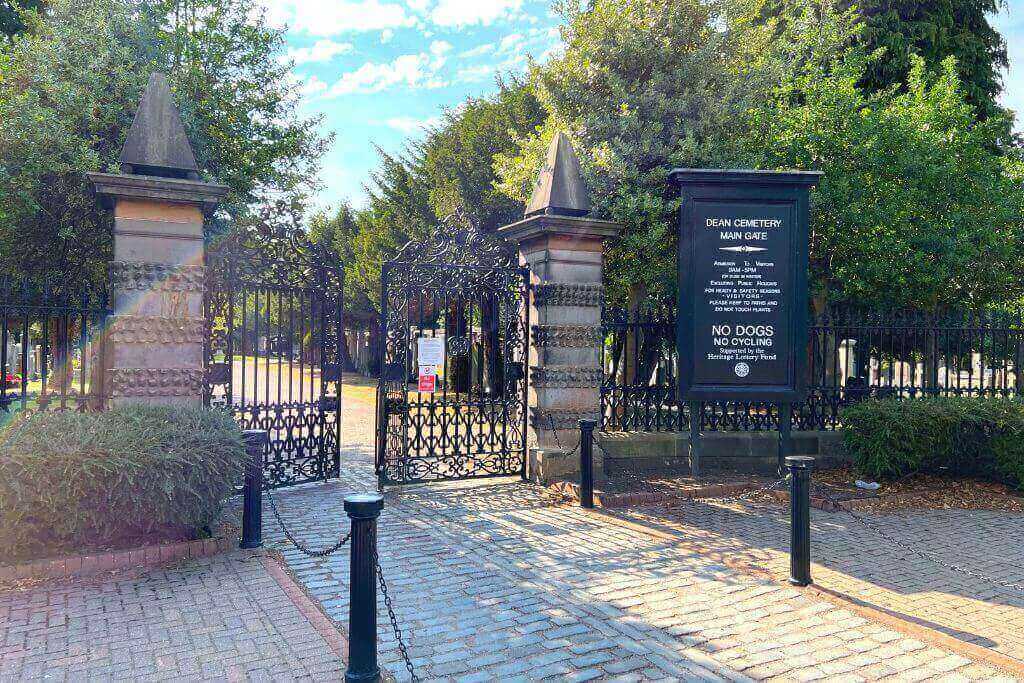
These are outstanding examples of Victorian history and aesthetics, as well as works by Sir John Steell and Amelia Robertson Hill. Dr. Joseph Bell, Queen Victoria’s personal physician and the model for Sherlock Holmes in Arthur Conan Doyle’s stories, and Isabella Bird, a well-known traveler and author who was the first woman to be elected a fellow of the Royal Geographical Society, both have elaborate memorials.
3. How to Get to Dean Village
Near Stockbridge, on Edinburgh’s Water of Leith, is Dean Village. The renowned Princes Street in Edinburgh is just a short stroll from the village. From Princes Street, proceed down Queensferry Street until you reach the village.
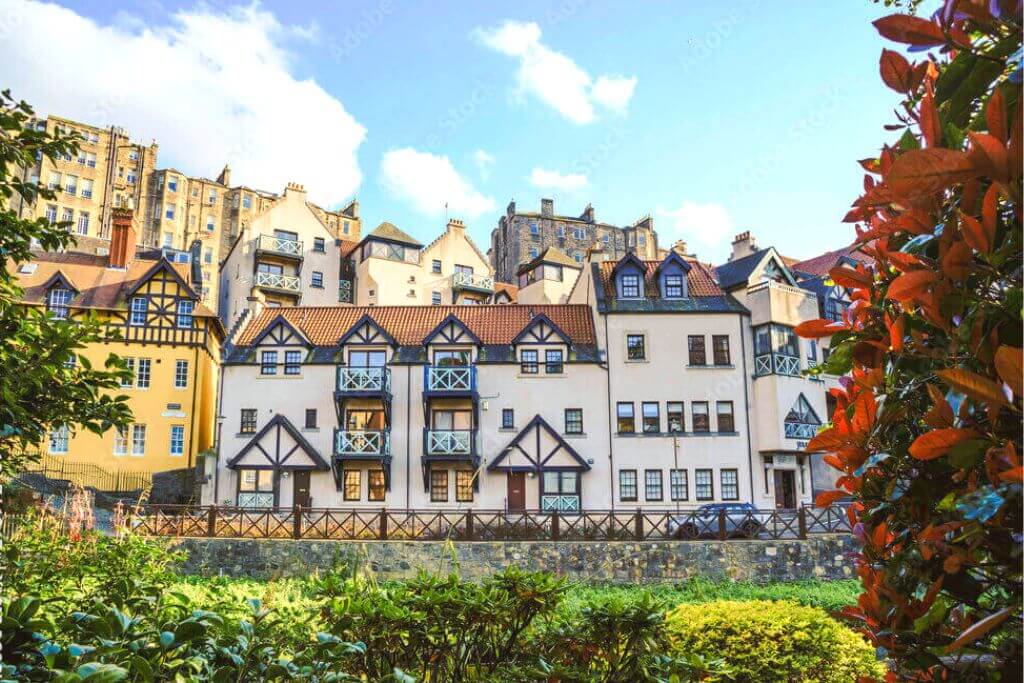
If you don’t feel like walking, you can take a short cab ride from the city center to Dean Village. You could also take one of Edinburgh’s hop-on, hop-off bus tours to get there. To go to Dean Village, be sure to exit Charlotte Square.
4. Best Tips For Visiting Dean Village
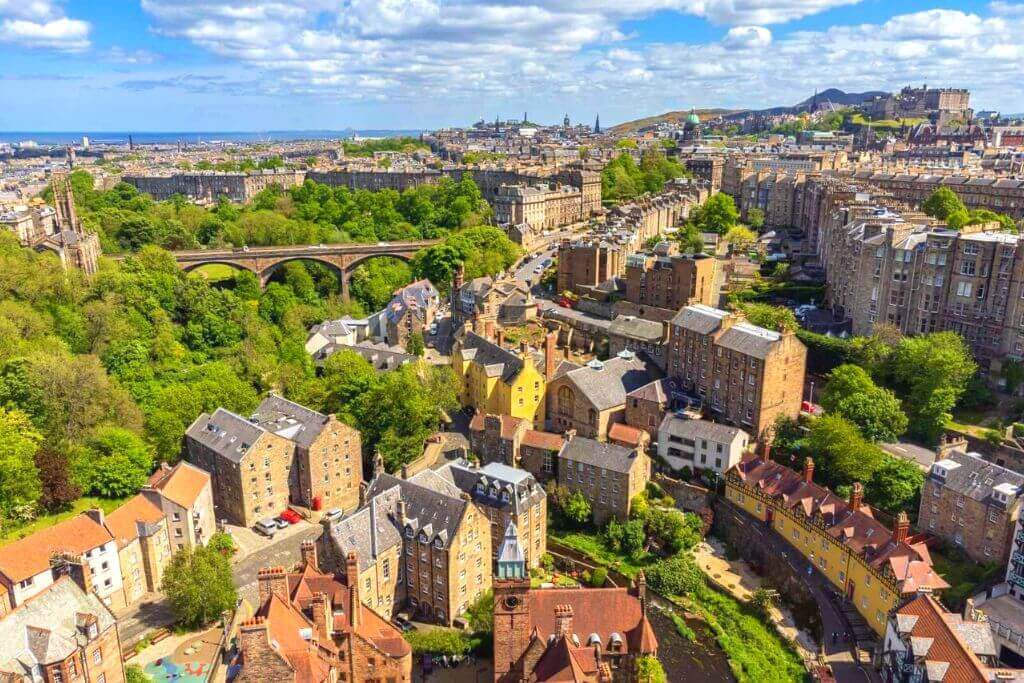
- Normally, parking is available along the road across the Dean Bridge. While it is pay-per-hour throughout the week, it is free on Sunday.
- Be mindful that many of Dean Village’s historic structures are residential apartment buildings. Although it is obvious that the location is a popular tourist destination, the locals will not appreciate visitors invading their space.
- Listening to a tour guide from Dean Village on a mobile device is one of the greatest methods to learn about the history of the place. Maps and GPS coordinates are included on the trip, so you will know exactly where to go while taking in the narrator’s descriptions of each spot.
